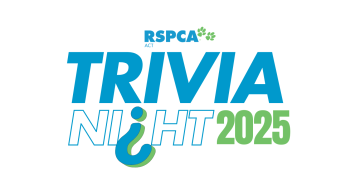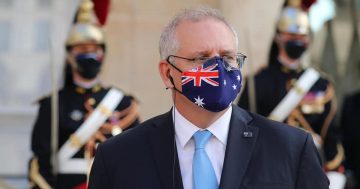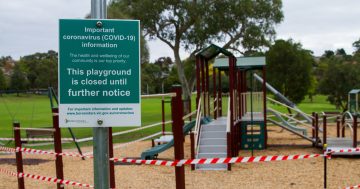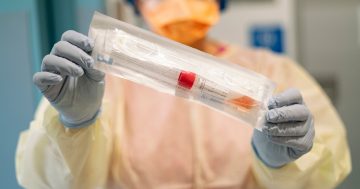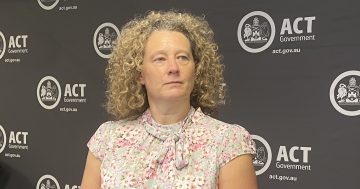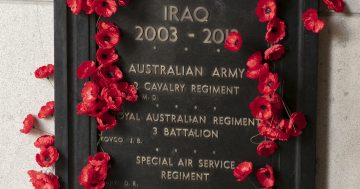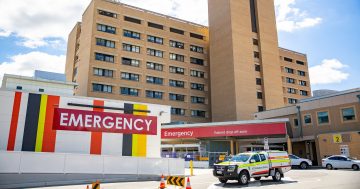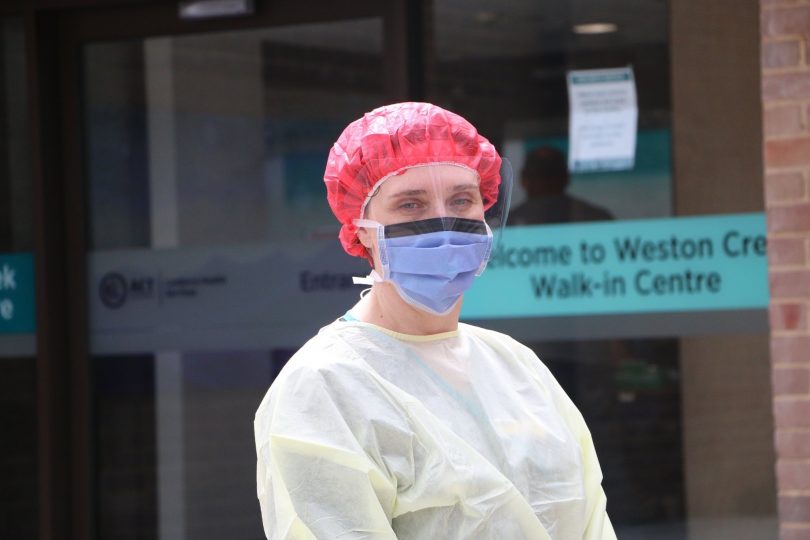
The ACT remains a declared hotspot in Queensland despite having no active COVID-19 cases. Photo: Canberra Health Services.
Confusion continues to reign over Canberra’s status as a COVID-19 ‘hotspot’ as the ACT Government seeks clarity around how a jurisdiction that’s been entirely virus-free for almost seven weeks meets the definition.
But despite pleas from Chief Minister Andrew Barr and a directive from the Prime Minister, there is still no consensus about why and how the definition has been applied to the ACT.
A principal medical advisory council has been tasked with standardising the hotspot definition, which currently means that Canberrans are not allowed to enter Queensland where there are, paradoxically, significantly more active COVID-19 cases.
Queensland is currently grappling with a virus outbreak stemming from a Brisbane detention centre. While the rate of increase has been in single digits for several days, there are 18 active cases in the state and public health alerts have been issued for more than 55 sites across Queensland’s south-east.
However, the state’s border remains shut to Canberrans because of the ACT’s porous borders with NSW and community transmission in Sydney, three hours’ drive away. NSW Health authorities confirmed three new COVID infections in the 24 hours to 8:00 pm yesterday.
The Queensland Government defines hotspots as “places in Australia where health officials have found a lot of people with COVID-19. Hotspots are legally listed so that people travelling from those high-risk areas into Queensland can be identified”.
The ACT was listed by Queensland as a COVID-19 hotspot on 8 August. The last active COVID-19 patient in the ACT had recovered a week earlier on 1 August while the last cases were diagnosed on 9 July.
On Friday, the Australian Health Protection Principal Committee (AHPPC) – the key decision-making committee for health emergencies – was told by National Cabinet to “develop a common understanding to define a hotspot and consider movement restrictions relating to a hotspot”.
Chief Minister Andrew Barr said he lobbied Queensland Premier Annastacia Palaszczuk during the National Cabinet meeting on Friday, but it remains unclear whether the ACT would remain a designated hotspot under the new “common understanding”.
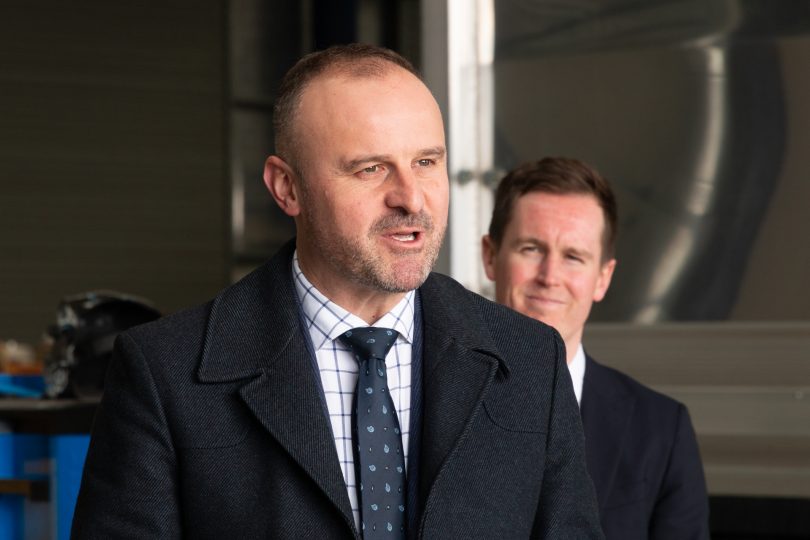
Chief Minister Andrew Barr has lobbied his Queensland counterpart to open the state’s borders to Canberrans. Photo: Dominic Giannini.
“I raised the issue of the ACT being incorrectly referred to as a ‘hotspot’ at National Cabinet. I pointed out to the group that the ACT had gone the longest time without a case and had never had community transmission,” Chief Minister Andrew Barr told Region Media.
“It is, however, up to each state and territory leader who they shut or open their borders to.”
But despite those pleas, there’s been no confirmation from the Queensland Government about whether they would be prepared to reopen the border to the ACT, even if the AHPPC declared that Canberra is not a hotspot.
A Queensland Government official told Region Media that there would be “bigger problems” if the AHPPC decided to overrule health advice provided by the state’s CHO.
“We can’t pre-empt what will be decided in AHPPC, but will keep the community updated with any changes to declared hotspots,” a Queensland Health spokesperson said.
Prime Minister Scott Morrison has also called for more clarity on the issue.
“These decisions cannot be made on an arbitrary basis,” Mr Morrison said.
“I am not suggesting they are, I am just saying it was agreed that we are going to ask once again for us to get a clear definition of what constitutes a hotspot.
“When you have restrictions that are being placed on people’s movement in the country based on what is and what is not a hotspot, there needs to be a clear medical and scientific definition of what that is.”











